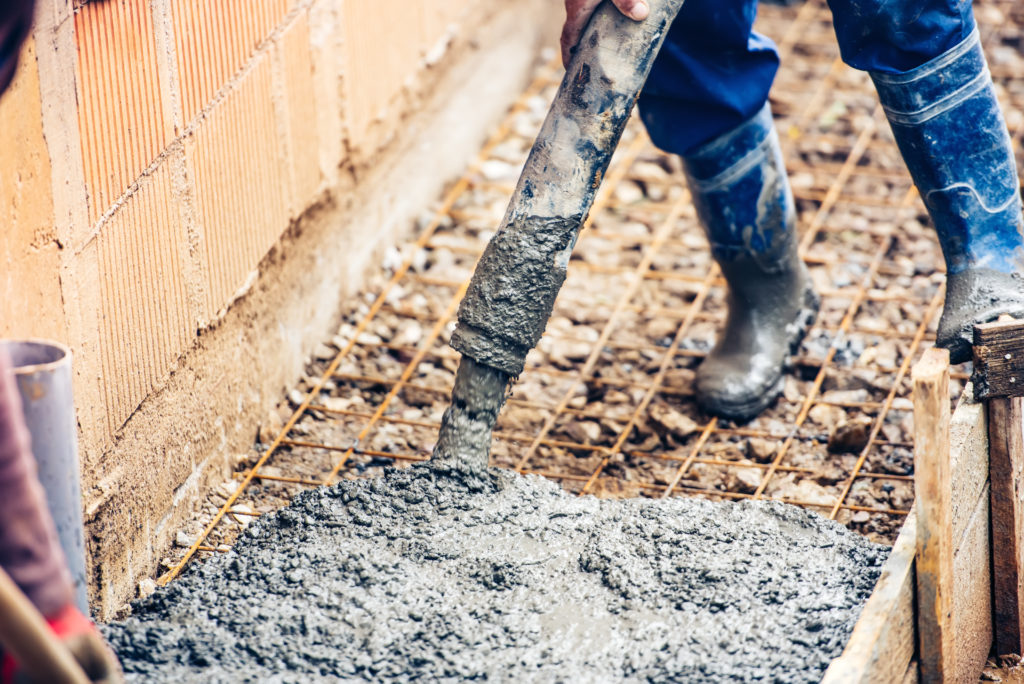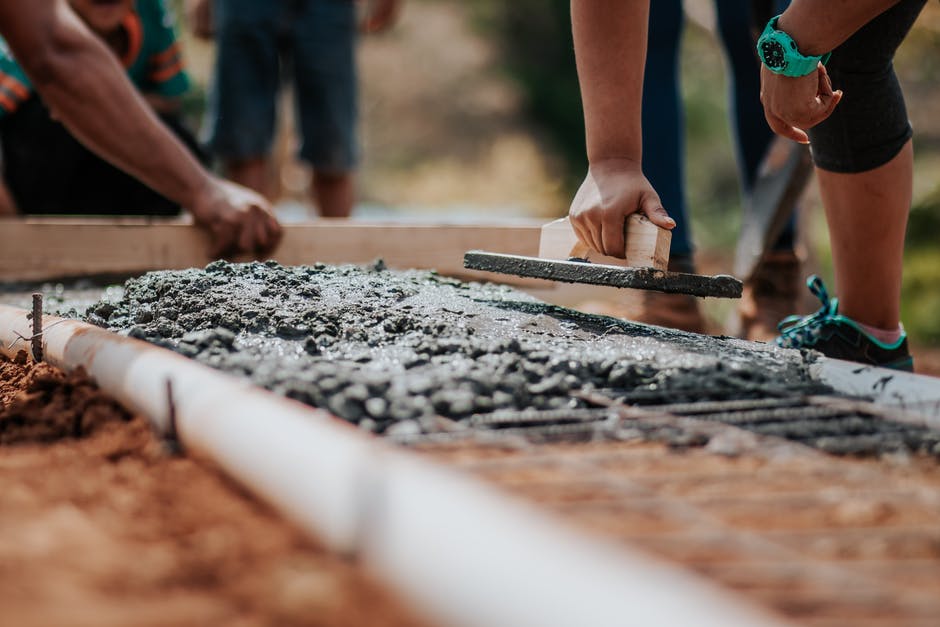Do you have a ready-mix concrete project or repair to do? It’s real simple, right? Just contact your local concrete guy, figure out how much concrete you need, order it and go.
Well, not so fast. There a different types of concrete for different types of jobs. There’s concrete for landscaping, as well as specific types for other ready mix concrete applications. And what if you’re doing a bigger job?
You don’t want to
It’s important that you’re selecting the right ready mix concrete for the job. After all, concrete is like a tool. You wouldn’t use a hammer to install a screw, would you?
Well, you’re in luck. Today we are going to go into detail about the different types of ready mix concrete. We’ll go over when each one is appropriate and how you can choose the highest quality concrete for your next job.
Let’s get going!
What Is Ready Mix Concrete?
Let’s take a minute to go over what ready mix concrete is for those that are unfamiliar.
Ready mix concrete comes together in a factory or plant and arrives on-site in “ready to use” condition. This is different than powdered concrete mix you find in the store. Ready mix concrete comes to the job site in a “plastic-like” consistency.
This type of concrete is usually helpful on large job sites. The benefits are twofold. First, it saves contractors and homeowners from breaking their backs mixing large amounts of concrete.
Second, it helps to save space. On larger jobs, trucks are constantly coming and going. Materials are being dropped off. Trash, debris, and containers are being picked up.
There’s a lot going on. Having to store all of the materials to mix concrete on-site would make things much more crowded. The lack of space could actually be a hazard for people attempting to move around the site and get their work done.
It’s better off to go with a ready mix option and avoid the issue entirely.
How Does It Work?
Concrete is such a useful material because it undergoes a natural curing process. The curing process is the technical term for the hardening of your concrete. That’s what gives the concrete its strength.
To supply contractors and homeowners with cement/concretes, something has to change about this process. If the concrete “does its thing” naturally, customers would have hard, useless concrete by the time they opened the container.
For that reason, concrete suppliers use chemicals known as retardants to slow down the curing process in the concrete. Batches of the concrete undergo testing at the factory and then again on-site.
Any amount of curing can compromise your concrete’s strength. And, you don’t want to complete your job with low-quality concrete.
Ready Mix Concrete Types
You may think you’re pouring the right type of concrete for your project. But, it’s important to check with a professional. There are three main types of concrete and each one is for a different type of project.
Let’s look at them in more detail.
Transit Ready Mix Concrete
This is the most common type of ready mix concrete. Generally, it’s used by contractors on larger building projects.
With this type of concrete, the ingredients come together in a manufacturing plant. Then, the concrete moves to the job site via a concrete mixing truck.
We’ve all seen a truck mixer before. This is the truck we always see on the roads with that giant spinning drum on the back. This type of concrete can also be known as “truck mixed” or “dry batched”.
One of the benefits of this method is that it prevents the early hardening of the concrete. Even the slightest bit of early hardening can be devastating to a construction job of this size.
Within the transit concrete category, there are three different types you can use. They are concrete that’s mixed in transit, mixed at the job site, or mixed in the yard. Mixed in the yard refers to the truck yard of the concrete company.
Central-Mixed Concrete
If contractors or homeowners can’t risk sacrificing any quality when it comes to their concrete mix, they’ll typically use central-mixed concrete. With this type of concrete, the concrete comes together in a stationary vessel. From there, the mix undergoes all of the necessary tests to make sure it’s nothing short of perfect.
Only batches that receive approval after rigorous testing make it to the job site. This type of concrete is known as “wet batch”.
While the quality of the concrete is very high, the downside of this process is that it can be time-consuming. If you’re working on a home improvement project you may have that kind of time. But, most commercial construction projects are on tight deadlines.
As a result, you’ll need to plan ahead to make sure central-mixed concrete is a viable option for you.
Shrink-Mixed Concrete
This type of concrete goes through the entire preparation process in a factory or manufacturing plant. All of the ingredients come together at the concrete plant and any necessary adjustments are made before the concrete moves into the transit phase.
Once it’s ready, the concrete mix moves through concrete pumps and into the truck for transport. Mixing the concrete this way increases the capacity of the transport truck. The concrete mix is balanced out even more during transit to the job site.
Concrete for Landscaping
The type of concrete for landscaping is different than the others. Landscaping concrete is decorative in nature. As a result, it doesn’t need to require the strength and load capacity of the ready-mix concretes used in other applications.
However, you’ll still want a high-quality mix when using concrete for landscaping. Since it is mostly decorative, cracks and crumbling become much more noticeable. Talk to your local concrete mason about which ready mix option is best for your landscaping project.
Ready Mix Concrete Benefits
So, why use ready mix concrete? Well, that’s a great question. Ultimately, whether or not ready mix concrete is right for you is going to depend on the project you’re doing.
Nevertheless, we’re going to outline some of the benefits so you can decide if ready mix concrete is right for you.
You Know What You’re Getting
By now you know that using quality concrete is important. That’s true no matter what scope of the project you’re doing. What makes ready mix concrete such a great option is that you know what you’re getting.
Since the concrete is mixed in a plant, concrete masons can control the conditions. It also helps that your concrete is being monitored and tested by experts before it reaches you on your job site.
This is what these guys do every day. Their techniques are consistent and they have access to equipment that helps them produce the same type of concrete every time.
Meet Your Deadlines
For contractors doing big commercial projects, ready mix concrete can be a lifesaver. Using a ready mix option allows contractors to complete projects on time, every time.
Not having to deal with mixing large amounts of concrete for your construction project makes things move so much faster. Using ready mix allows contractors to pour at almost double the speed of concrete that’s traditionally mixed.
Using a ready mix concrete also helps save time in the mixing process. Since the product is delivered in ready-to-use condition, it helps cut down work time on days when concrete projects need to be done.
Typically, all you have to do is schedule delivery of your concrete with your local mason and wait for the truck. As long as all of your forms and on-site preparation are done when the truck arrives, you’ll be good to go!
Cut Costs
While it’s true concrete may have a higher initial cost, it can help you cut costs in the long run. There are two ways concrete can help you with your budget.
Ready-mix concrete is a great way to reduce waste. The high-tech mixing techniques help to reduce cement consumption.
Using a ready mix also helps to cut down labor costs. You’ll need fewer people on-site to help you mix your concrete. You’ll also need fewer supervisors on-site.
Eco-Friendly
It’s always rewarding when a commercial-sized construction project can reduce its impact on the planet. Ready-mix concrete can help contractors do just that.
More efficient equipment can be used in the manufacturing plant, reducing the on-site environmental impact. Ready-mix concrete is also producing less waste than traditional mixes.
Quality Concrete Is Solid Like a Rock
By now it’s clear that no matter the project, the choice to use quality ready mix concrete is solid like a rock. Whether it’s a landscaping project, commercial construction job, or at-home concrete repair, you now know everything you need to select the concrete that’s right for you.
If you have any more questions about ready mix concrete or other quality concrete applications, contact us at any time. Our team of experts is ready and willing to do whatever it takes to make your projects come out perfect every time.







